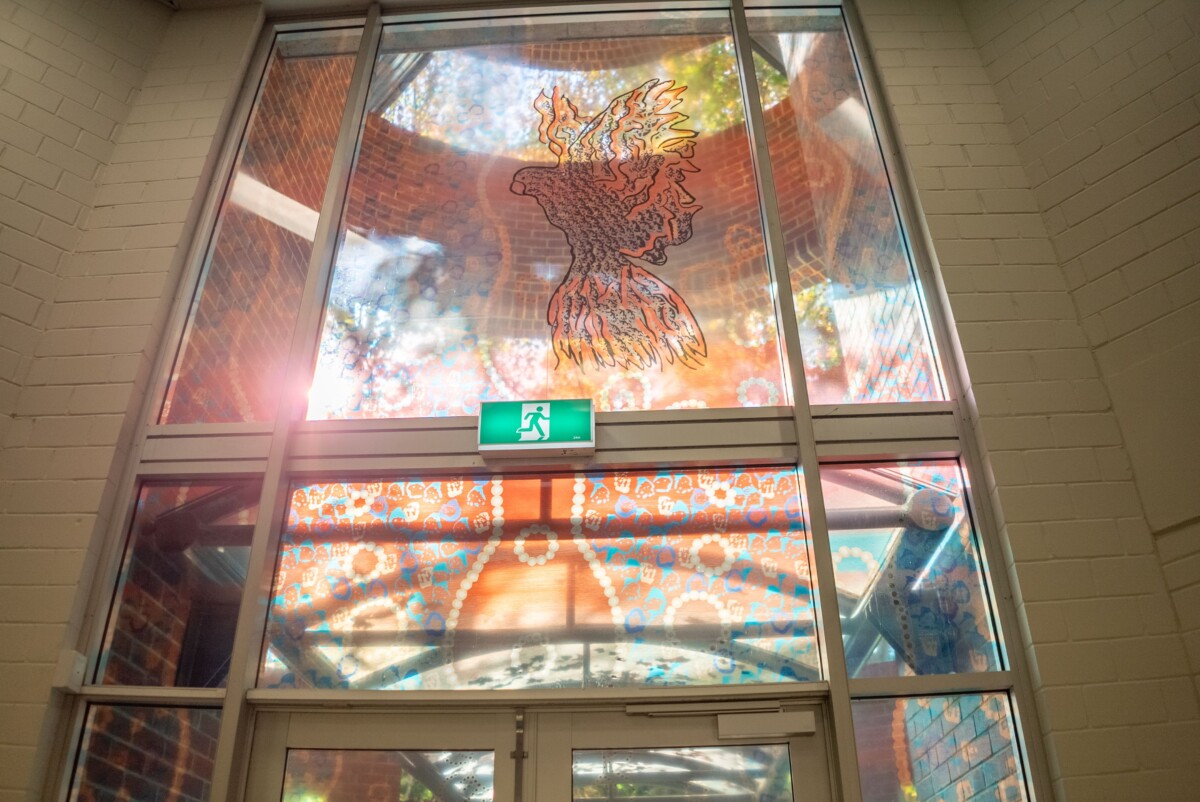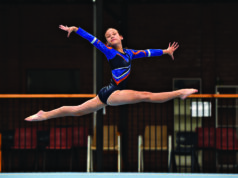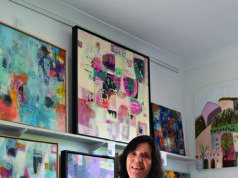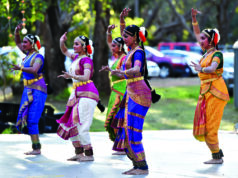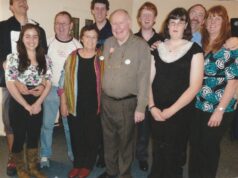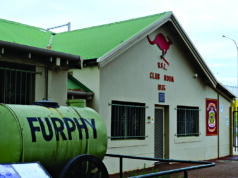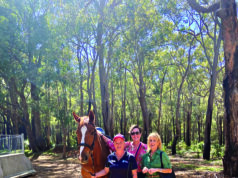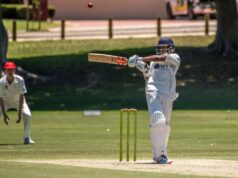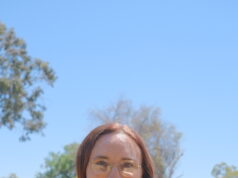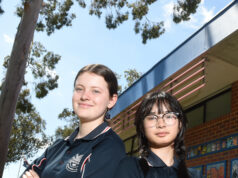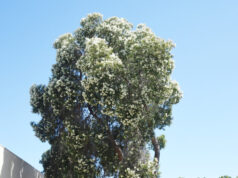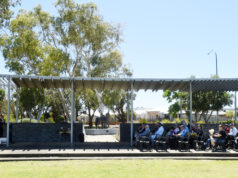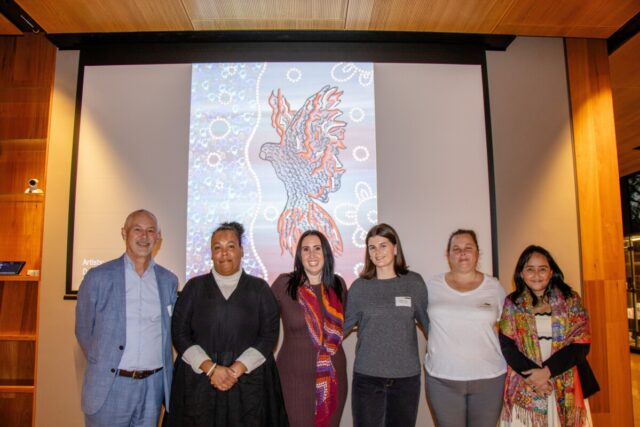
A shared love for the black cockatoo brought together two Curtin University students from different backgrounds to create an artwork now featured on campus.
‘Weelyark Looking into the Rain’, a striking piece by Nyoongar artist Fiona Reidy and Communications student Desi Marliani, has been installed on the side of Building 209 after winning Curtin’s 2025 Indigenous Futures Artwork competition.
For Fiona, the project was a chance to collaborate with a friend and honour the Weelyark, also known as the Karak, a bird she describes as both majestic and deeply meaningful.
“The most meaningful part of this artwork was our shared love for these birds, which highlights the foundation of our friendship and collaboration,” Fiona said.
The pair met through university and found common ground despite growing up in different cultures. Their creative journey involved learning from each other and blending perspectives; with Fiona teaching Desi how to paint, and Desi learning to trust the process.
“Initially unsure about the colours, she grew more confident as we progressed. We talked about how much the Weelyark meant to us and expressed our concerns about their food sources and the risk of extinction if those resources continue to be taken away,” Fiona said.
“This discussion helped break barriers in our friendship, allowing us to be completely open and honest in our conversations.”
Desi said the most meaningful part of the project was simply the friendship that formed along the way.
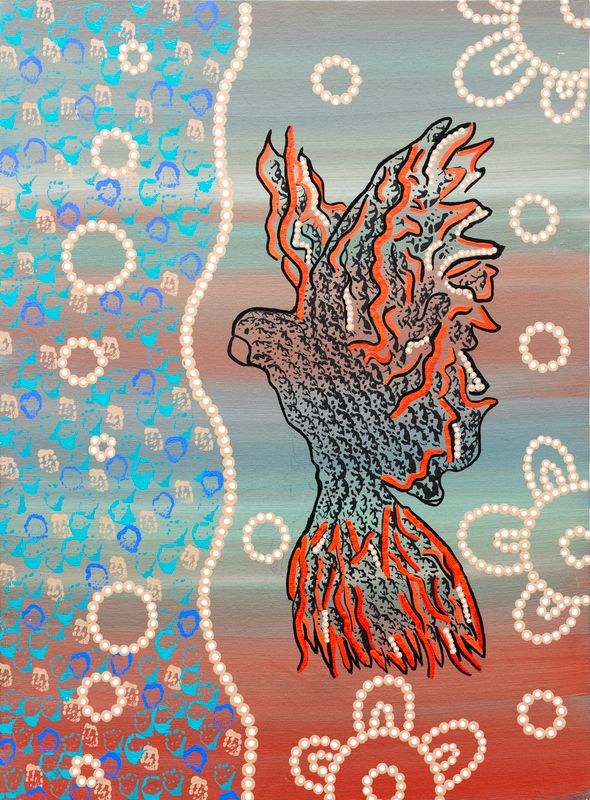
“Although we grew up in different countries with different cultural backgrounds, we have some particular things in common. I learned a lot from Fiona,” she said.
The idea for the painting started with a simple sketch of a black cockatoo, but progressed into something more symbolic and vibrant after the pair were inspired by other bird artworks and Nyoongar seasonal stories.
“We knew that we would paint a black cockatoo, but we did not know what style,” Desi said. “In Nyoongar culture, black cockatoos are believed to fly over you as a sign that rain is coming. So, we paint three seasons along with it.”
Fiona said the moment she saw Desi embrace bold red lines on the bird’s wings stood out.

“Seeing the joy on Desi’s face when the artwork was completed confirmed that what we created together is truly special.”
For Desi, that moment was a turning point in their creative journey.
“Fiona convinced me to be bold with red lines over its wings. I was afraid it was too bright. Then she took the canvas and stood with it within five metres of me. She said, ‘Believe me. Look. If this is digitised, this will stand out’ And yes, she was right,” she said.
Now displayed publicly, the piece doesn’t just show personal growth and shared values, but also a message of unity and environmental awareness.
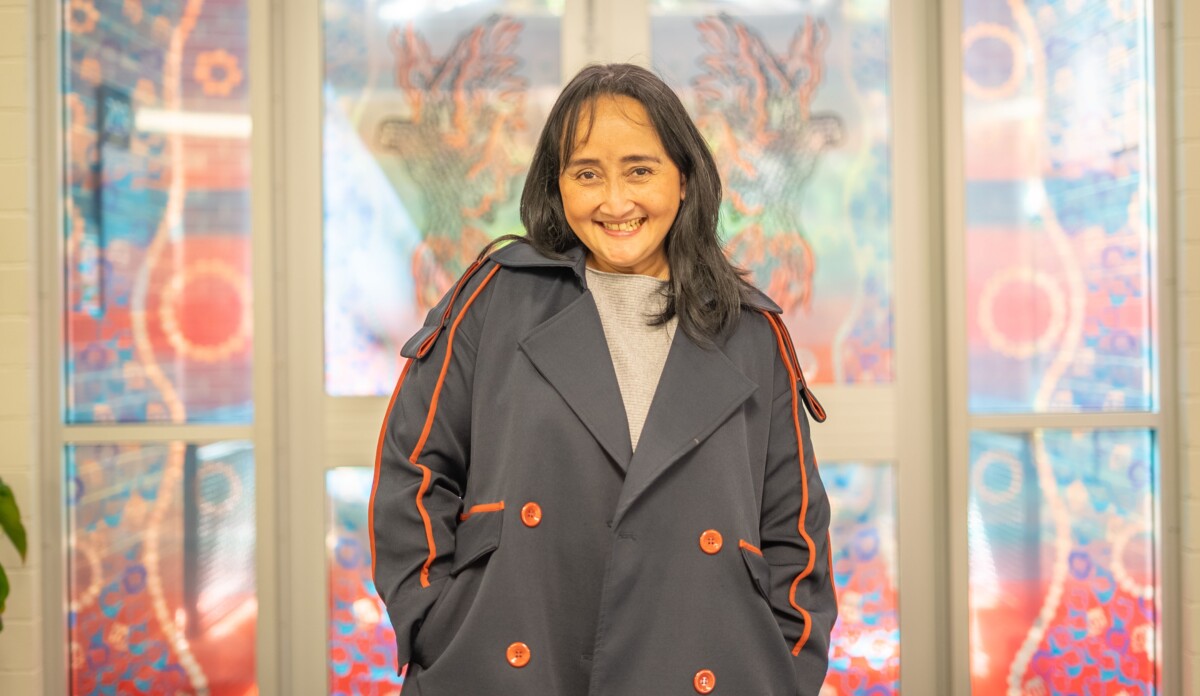
“I hope people recognise the Weelyark’s majestic quality and feel a sense of love and appreciation for their beauty,” Fiona said. “The painting speaks for itself, drawing viewers in and mesmerising their senses.”
Desi said she hopes the artwork sparks reflection. “I want them to know that this endangered creature is native to Western Australia. I hope they feel a connection to the story and its cultural significance.”
Both artists said they would love to work together again.
“Combining our two perspectives into one artwork can be truly magical,” Fiona said.
Desi added, “I love working with her. I love how she challenges me to push my boundaries and try new things. Collaborating with her has been a great learning experience.”
Curtin’s Dean of Indigenous Futures, Associate Professor Mandy Downing, praised the partnership, saying it reflected the spirit of ReconciliAction through creativity and friendship.
